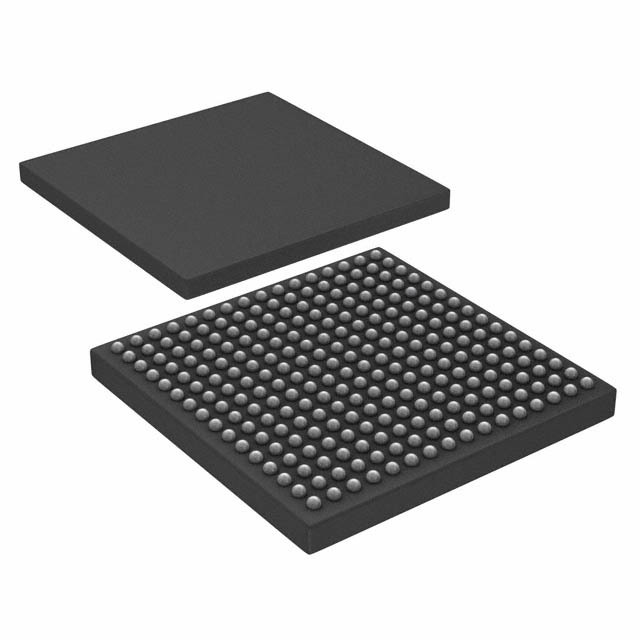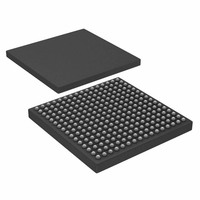What Are Audio Synthesizer ICs?
-
Introduction
Audio synthesizer Integrated Circuits (ICs) are specialized microelectronic components that generate, manipulate, and control sound in digital music production, electronic musical instruments, and various sound-processing applications. With the evolution of music technology, these ICs have become central to modern audio synthesis, replacing traditional analog synthesizers in many scenarios and making sound creation more accessible and versatile than ever. Audio synthesizer ICs allow for the generation of a wide range of sounds, from simple waveforms to complex audio effects, and have found applications in everything from music production software to video games, mobile devices, and even automotive sound systems.
This article explores the various types of audio synthesizer ICs, how they work, their applications, and the future trends in digital sound generation.
1. What are Audio Synthesizer ICs?
An audio synthesizer IC is a hardware chip that generates, processes, and controls sound electronically. Unlike traditional acoustic instruments, which produce sound through mechanical vibrations (such as a vibrating string or air column), an audio synthesizer IC creates sound waves through electronic circuits, often leveraging digital signal processing (DSP) techniques. These ICs combine oscillators, filters, amplifiers, modulators, and other sound-generation elements into a single integrated chip.
At their core, audio synthesizer ICs are designed to simulate or generate audio waveforms (such as sine, square, sawtooth, and triangle waves), which can then be manipulated to create more complex sounds and musical tones. Many of these ICs also allow for modulation, sequencing, and real-time control via MIDI (Musical Instrument Digital Interface) or other communication protocols.
2. Types of Audio Synthesizer ICs
There are different types of audio synthesizer ICs, each designed for specific sound-generation tasks. These ICs vary in their architecture, processing capabilities, and the type of synthesis they support. The most common types of audio synthesizer ICs are:
2.1 FM (Frequency Modulation) Synthesizer ICs
FM synthesis is a method of sound generation that creates complex harmonic sounds by modulating the frequency of one oscillator with another. The Yamaha YM series of FM synthesizer ICs, such as the YM3812 (OPL2) and YM2612, are examples of popular FM synthesizers used in classic video game consoles, synthesizers, and sound cards. FM synthesis is known for its ability to create bell-like, metallic, and evolving sounds that are distinct from traditional analog synthesis.
Key Features of FM Synthesizers:
- Harmonic complexity: Capable of producing rich, evolving timbres.
- Low cost: FM synthesizers are less resource-intensive compared to other types of synthesis.
- Real-time modulation: The modulation of one frequency by another leads to highly dynamic, expressive sounds.
2.2 Wavetable Synthesizer ICs
Wavetable synthesis uses pre-recorded samples (waveforms) stored in a table and then plays back or processes them in real time. Wavetable synthesizer ICs are capable of producing a broad range of sounds, including the simulation of real instruments, by crossfading between different waveforms or manipulating the sample data.
One popular example of a wavetable synthesizer IC is the Wavetable Synthesizer IC by Analog Devices, which uses built-in digital-to-analog conversion (DAC) to output high-quality audio signals.
Key Features of Wavetable Synthesizers:
- Flexibility: Allows for the use of a variety of stored waveforms, providing rich, evolving sounds.
- Sample-based synthesis: Can simulate real-world instruments with great accuracy.
- High-quality sound: Produces more natural-sounding results compared to traditional oscillator-based synthesis.
2.3 Subtractive Synthesizer ICs
Subtractive synthesis is the most traditional form of synthesis, where harmonically rich waveforms (such as sawtooth or square waves) are passed through filters to subtract unwanted frequencies, shaping the tone. Subtractive synthesizer ICs often include components like oscillators, low-pass filters, and amplifiers.
These ICs are used in many iconic synthesizers and sound generation systems, such as the Roland TB-303 bass synthesizer. Subtractive synthesizers can create a broad range of sounds, from deep basses to bright leads and atmospheric pads.
Key Features of Subtractive Synthesizers:
- Classic sounds: Ideal for analog-style sounds, including basses, leads, and pads.
- Simple design: Focuses on oscillators and filters to shape sound.
- Real-time control: Allows for expressive, hands-on modulation of sound.
2.4 Physical Modeling Synthesizer ICs
Physical modeling synthesis is a more advanced approach that simulates the physical properties of sound-producing objects, such as strings, drums, and wind instruments. This technique involves solving mathematical models that replicate the behavior of real-world instruments. While not as widely used as FM or wavetable synthesis, physical modeling synthesizer ICs provide the most realistic reproduction of acoustic instruments.
Key Features of Physical Modeling Synthesizers:
- Realism: Highly accurate simulations of real-world instruments.
- Complex algorithms: Requires advanced processing power to simulate the behavior of physical objects.
- Expressiveness: Can mimic the subtleties of human performance, such as breath control or finger pressure.

3. How Audio Synthesizer ICs Work
Audio synthesizer ICs combine several components in a single package to generate and manipulate sound. These include:
- Oscillators: Generate periodic waveforms, which are the foundation of any synthesized sound. Oscillators can produce different waveform shapes such as sine, square, sawtooth, and triangle.
- Filters: Shape the sound by removing or attenuating certain frequencies. Filters can be low-pass, high-pass, band-pass, or notch filters, and they are crucial for shaping the timbre of the sound.
- Envelopes: Control how a sound evolves over time, such as how it starts (attack), decays, sustains, and ends (release). Envelopes are often applied to volume or filter parameters.
- Modulators: These components modify various aspects of the sound over time, such as pitch, filter cutoff frequency, or volume. Modulation can be controlled using external signals (like LFOs) or user input (such as MIDI controllers).
- Digital-to-Analog Conversion (DAC): Converts the processed digital audio signal into an analog output that can be sent to speakers or other sound output devices.
4. Applications of Audio Synthesizer ICs
Audio synthesizer ICs have become essential in a wide variety of applications, both in professional music production and consumer electronics. Some of the key areas where these ICs are used include:
4.1 Music Production and Sound Design
In digital audio workstations (DAWs), music production software, and virtual instruments, audio synthesizer ICs provide the foundation for sound creation. Synthesizer ICs are used in sound modules, synthesizer keyboards, software plugins, and digital audio effects processors. These ICs allow musicians and sound designers to create a wide array of sounds, from synthetic textures to realistic instrument emulations.
4.2 Video Game Soundtracks
Video games use audio synthesizer ICs to generate dynamic sound effects and in-game music. Early video game consoles, like the NES, Sega Genesis, and Super Nintendo, used FM synthesizer chips to generate audio. Modern games often rely on sophisticated sound synthesis to create immersive audio experiences with rich, interactive soundscapes.
4.3 Embedded Systems and Consumer Electronics
Audio synthesizer ICs are also embedded in various consumer electronics, including smartphones, tablets, digital toys, and smart speakers. These devices utilize the ICs to generate sounds for notifications, alerts, and voice synthesis, providing rich and customizable audio outputs.
4.4 Automotive Sound Systems
In automotive applications, synthesizer ICs are used to generate audio feedback in infotainment systems, navigation prompts, and driver assistance systems. These ICs can also create customizable sound effects for electric vehicles, such as engine sound simulation or alert tones, improving the overall driving experience.
5. Trends and Future of Audio Synthesizer ICs
As technology advances, several key trends are shaping the future of audio synthesizer ICs:
5.1 Integration with Artificial Intelligence
With AI-driven sound generation becoming more prominent, future audio synthesizer ICs may incorporate AI algorithms for real-time sound synthesis, sound classification, and even adaptive audio responses based on environmental factors. AI could allow synthesizers to learn and generate sounds that mimic human performance or create entirely new musical ideas.
5.2 Low Power Consumption
As devices become more mobile, power consumption has become an essential factor in synthesizer IC design. Low-power audio synthesizer ICs are increasingly in demand for portable devices, such as wearable tech and battery-powered music instruments, where power efficiency is paramount.
5.3 Advanced Sound Modeling
With the growing demand for realistic and dynamic sound in entertainment and professional sound design, IC manufacturers are focusing on improving physical modeling synthesis and real-time sound manipulation. This could lead to more lifelike and expressive sound generation, especially in applications like gaming and virtual reality (VR).
6. Conclusion
Audio synthesizer ICs have come a long way since their inception, and they continue to evolve to meet the demands of the modern sound industry. From professional music production to interactive media and embedded systems, these ICs form the backbone of digital sound generation. With advancements in artificial intelligence, low-power design, and advanced sound modeling, the future of audio synthesizer ICs is bound to bring even more exciting innovations in how we create, interact with, and experience sound.

